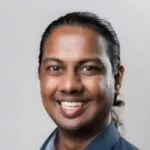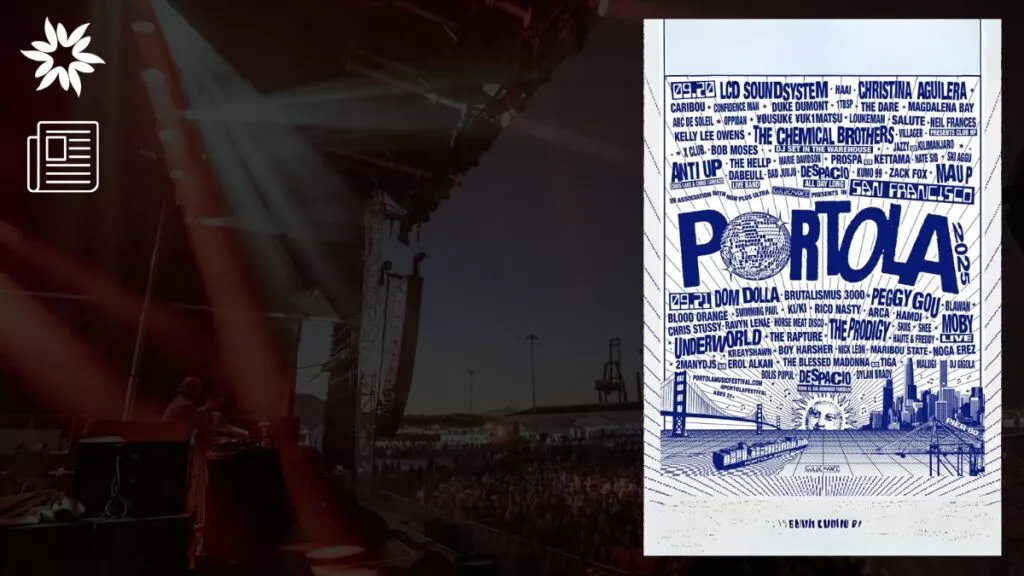So, you’ve walked into an art store, stared at the massive wall of watercolor paints, and felt utterly lost, right? I’ve been there!
With so many colors, brands, and options staring back at you, it’s easy to get overwhelmed.
But don’t worry—this guide will teach you everything you need to know to start watercolor painting.
So, let’s break it down together, step by step, so you can start having fun with your painting!
Key Takeaways
- Higher-quality paints have better pigments, which means brighter, more vibrant colors.
- Student-grade paints are cheaper, but professional-grade paints offer better results and last longer.
- Start with the basics, like primary colors, and then expand your palette as you go.
What’s in Watercolor Paint?
First things first, let’s talk about what makes watercolor paint.
Watercolor paints are made from pigments (which give them their color) and binders (which hold the paint together). Some paints also have additives that change how they feel or dry.
Now, the more pigment a paint has, the more vibrant it’ll look on paper. This is why cheaper paints tend to look dull—they don’t have as much pigment.
On the other hand, expensive paints are packed with pigment, which is why they give you those bright, bold colors.
Another thing you’ll notice about watercolors is how small the tubes or pans are. But even though watercolor paints come in small tubes or pans, they last a long time—so don’t worry if it seems like you’re not getting much paint for your money!
Student vs. Professional Paints: What’s the Difference?
Watercolors come in two main types: student-grade and professional-grade.
Here’s a quick breakdown of the differences:
Student-Grade Paints
Student-grade paints are great for beginners because they’re more affordable. However, the trade-off is that they use cheaper pigments and more filler so the colors won’t be as bright.
They’re still good for practice and learning, though!
Professional-Grade Paints
The best professional watercolor paints use high-quality pigments, making the colors stronger and easier to work with.
While they’re more expensive, you’ll notice a big difference in quality, and they last longer.
Some artists recommend starting with pro paints right away, as doing so will avoid frustration with bad results from cheaper paints.
But honestly, if you’re just starting and don’t want to waste pro-grade paints, student-grade paints are still a great choice. There’s no shame in starting small and upgrading as you go!
P.S. If you’re also new to drawing, check out our step-by-step guide on how to draw! Perfect for beginners!
Watercolor Pans vs. Tubes: What’s the Difference?
Watercolor paints come in two forms: pans and tubes. Both have their perks, so it’s really up to what you prefer.
Watercolor Pans
Pans are those little squares or rectangles of dried paint. They’re super convenient, especially if you like painting on the go.
Just add water, and you’re ready to roll. The nice thing about pans is that they’re easy to store, and you don’t waste paint because you’re only using what you activate with water.
Watercolor Tubes
Tubes hold liquid watercolor paint. Some people love tubes because they offer more flexibility—you can use as much or as little as you like.
But if you’re not careful, it’s easy to squeeze out too much.
Both options are great, and it really comes down to personal preference. Many prefer the convenience of pans, while others enjoy the flexibility of tubes.
So, your best bet is to try both and see what works best for you!
Watercolor Sets vs. Custom Palettes: Where Should You Start?
When you’re first getting into watercolors, you’ll probably come across pre-made sets of paints. These are, most definitely, a great place to start because they give you a nice variety of colors right out of the box.
Most sets come with half-pans in a small palette with a lid that doubles as a mixing tray—super handy!
However, as you grow more comfortable, you might want to put together your own custom palette.
That way, you can pick colors that suit your style and subject matter.
For example, you might choose more earthy tones if you like painting landscapes.
Or, if you’re into florals, you’ll want a selection of pinks, greens, and yellows.
How to Build a Basic Palette
Here’s a simple way to get started with a custom palette:
- Primary Colors: You can’t go wrong with a warm and cool version of each primary—red, blue, and yellow. For example, pick Cadmium Yellow (warm) and Lemon Yellow (cool), along with French Ultramarine (warm blue) and Phthalo Blue (cool blue).
- Secondary Colors: Next, add some green, purple, and orange for more variety in your mixes.
- Neutrals: Don’t forget a black or brown for shading and toning down your colors.
You don’t need a million colors to make great art. Start small, then build your collection as you go!
Understanding Watercolor Labels: Don’t Let the Terms Scare You
If you’ve ever looked closely at a tube or pan of watercolor paint, you’ve probably noticed a bunch of labels and codes that seem confusing at first glance.
But these labels actually hold some important information that can help you make smarter choices when buying and using your paints.
Let’s break them down simply so you’ll know exactly what you’re looking at!
Pigment Numbers
Each watercolor paint has a pigment number, which tells you exactly what pigments (or pigments) were used to create that specific color.
These numbers usually start with a “P” for pigment, followed by a letter indicating the color family (B for blue, R for red, Y for yellow, etc.) and a number.
For example, Cobalt Blue might be labeled as “PB28, ” meaning it’s the 28th blue pigment used in watercolor paint.
In fact, this number is super helpful because sometimes the names of the paints can vary between brands.
For instance, one company’s “Cobalt Blue” might look slightly different from another brand’s version, but if they share the same pigment number, you know you’re getting the same color.
So, if you find a color you love, you can confidently check the pigment number and buy it from different brands.
Lightfastness
Lightfastness is, basically, a fancy way of saying how well the color holds up over time, especially when it’s exposed to sunlight.
A paint with good lightfastness will keep its color for years without fading, which is important if you plan to hang or sell your artwork.
Watercolor paints are rated for lightfastness, usually on a scale of I to V, with I being the best and most resistant to fading and V being the most likely to fade over time.
For long-lasting paintings, aim for paints with a lightfastness rating of I or II.
Some colors, like bright neons, are known to have poor lightfastness (often called “fugitive colors”), meaning they’ll fade faster.
While these colors can still be fun to use, remember that they might not last, especially if exposed to a lot of sunlight.
Transparency
Watercolors are known for their transparency, but not all watercolor paints are equally transparent.
Some are more opaque, meaning they cover the paper more thoroughly and let less light through.
However, transparency is important for layering and glazing techniques. When paint is transparent, you can build up colors in layers to create depth and rich effects, letting the light shine through each layer.
Anyhow, opaque paints cover the paper more completely, which can be helpful when you want to make bolder, more solid statements in your painting.
You’ll often see transparency marked on the paint label with symbols like:
- A clear square for transparent,
- A half-filled square for semi-transparent, and
- A filled-in square for opaque.
Most artists like to have a mix of both transparent and opaque paints in their palette for different effects, so it’s good to know what you’re working with.
Recommended Watercolor Brands for Beginners and Professionals
As you can imagine, there are many brands of watercolor paints to choose from.
And it sure can feel overwhelming to figure out which one is best, especially if you’re new to painting.
Stuff those worries in a sack; we’re here to help with some recommendations.
And just to be clear, this is not a sponsored post. These are simply popular, well-loved brands that artists (including us!) trust and use.
Winsor & Newton
Winsor & Newton is a household name when it comes to good watercolor paints. They offer both student-grade (Cotman) and professional-grade paints, so you can choose what fits your budget and skill level.
Winsor & Newton’s professional line is highly regarded for its smooth application, bright colors, and excellent lightfastness.
On the other hand, their student-grade Cotman line is more affordable and still offers decent pigment quality, making it a great starting point for beginners.
- Best for: Beginners and pros alike
- What we love: Widely available, good quality across all grades, and lots of color choices
Daniel Smith
If you’re looking for a brand that delivers some of the best watercolor paints out there, Daniel Smith is a top contender.
Known for their extensive color range (over 250 colors!), they are especially popular among professional artists.
Their paints are highly pigmented, blend beautifully, and have unique colors, including interesting mineral-based pigments.
They’re definitely on the pricier side, but many artists swear by them for their unmatched quality.
- Best for: Serious watercolor artists or those ready to invest in high-quality pigments
- What we love: Rich, vibrant colors and unique pigments you won’t find anywhere else.
Sennelier
Sennelier is a centuries-old French brand known for using honey as a binder in its paints, which gives them a smooth, buttery texture.
These paints are super vibrant, flow well, and have a lovely transparency, perfect for glazing and layering techniques.
While they’re professional-grade paints, Sennelier is also a great option for serious beginners who want to work with top-quality materials.
- Best for: Artists who love smooth, flowing paints
- What we love: The honey-based formula makes the paints easy to work with and blend
Schmincke
Schmincke is a highly respected German brand in the art world. Their Horadam Aquarell line is a favorite among professional watercolorists, mainly because of its excellent lightfastness and pure, consistent colors.
Schmincke paints are known for their ability to rewet easily, which means they dry on your palette but reactivate with water smoothly, allowing you to get the most out of every pan or tube.
- Best for: Artists who need high-quality paints that rewet well and last
- What we love: Top-notch quality, rewetting ability, and reliable performance over time
Art Philosophy
Art Philosophy is a newer brand gaining popularity for its affordable and fun watercolor sets.
They’re perhaps the best choice for beginners because they offer good-quality paints at a budget-friendly price.
While they might not have the same level of pigment concentration as higher-end brands, they’re ideal for those just starting to explore watercolors without spending a fortune.
- Best for: Beginners who want good-quality paints without spending a lot
- What we love: Affordable, accessible, and great for trying out watercolors
Have Fun, and Don’t Be Afraid to Experiment!
Watercolor is about having fun, experimenting, and finding your flow. So, don’t stress too much about buying the “perfect” paints or having the “right” supplies.
Start small, try out a few different things, and let yourself make mistakes—that’s how you’ll grow as an artist!
Play around with mixing colors, try different amounts of water, or paint on different paper types.
Remember, the more you experiment, the better you’ll understand how the paints work. Just relax, have fun, and let your creativity flow.








